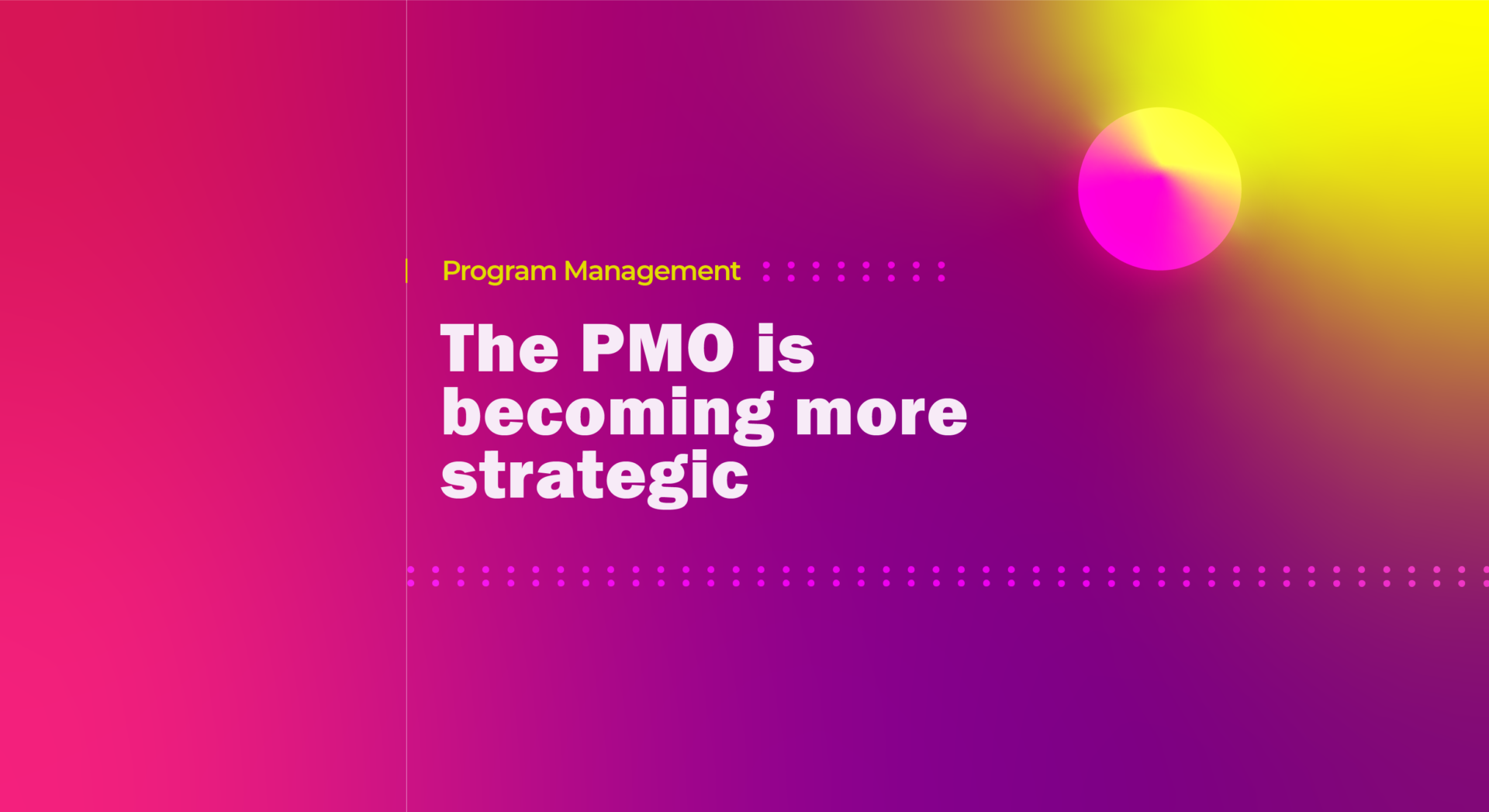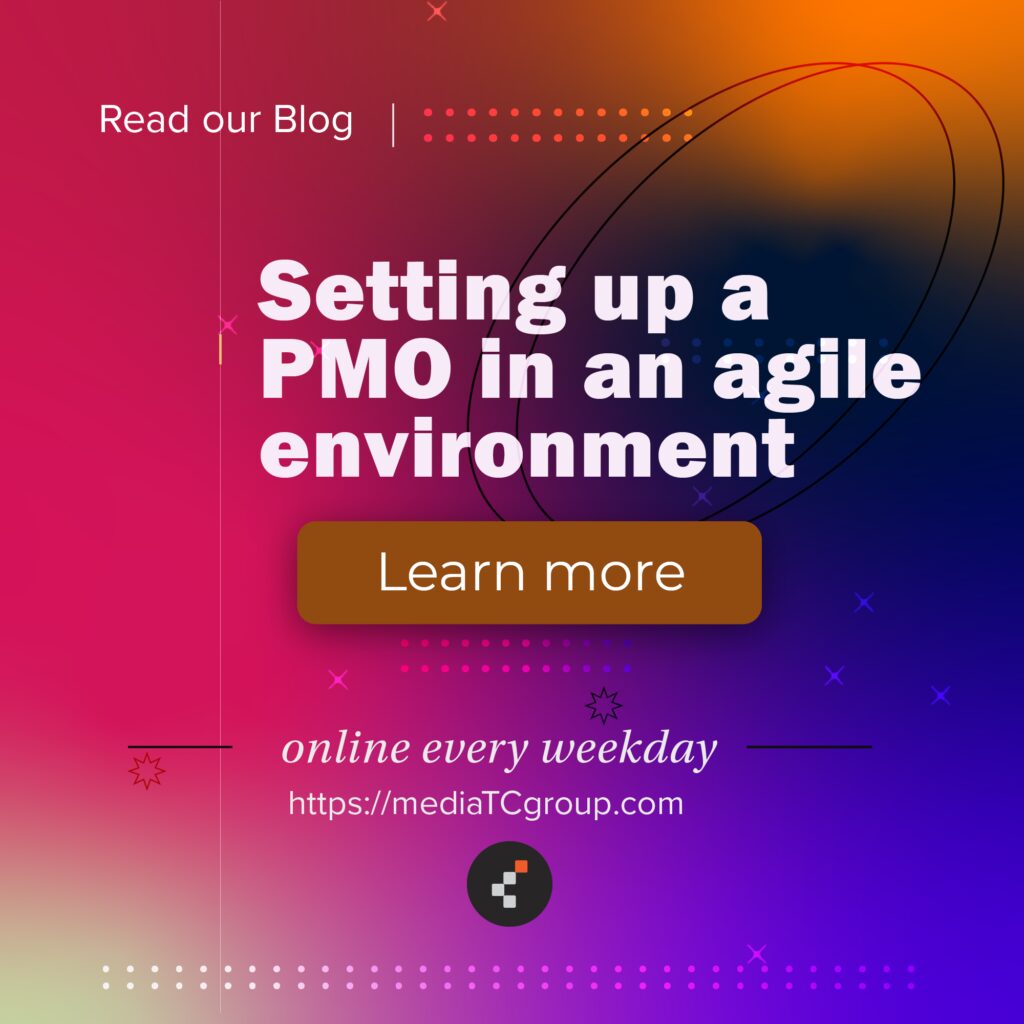
The Project Management Office (PMO) is becoming more Strategic
|
Tune in and get Inspired 🎧
Getting your Trinity Audio player ready...
|
The Project Management Office (PMO) is evolving. The PMO is no longer just a back-office role responsible for mundane tasks such as project documentation and compliance. Instead, it’s becoming more vital, playing a critical role in shaping an organization’s overall direction and strategy. As the PMO evolves, so too must the skills of its staff. Leaders must invest in training and development to meet the changing demands of the business world.
I often answer clients’ questions about the PMO’s reporting structure, operating model, and necessary skills for PMO leaders to have in today’s business environment.
Estimated reading time: 7 minutes
Where should the PMO report to?
The reporting structure of the PMO will vary depending on the organization and what it needs. In some organizations, they may report directly to the C-suite or senior management team. The organization’s strategic objectives should be connected to and influence the decision-making of the project management office staff. Organizations should provide proper support and access to key collaborators to ensure successful operations and achieve desired outcomes.
When is PMO most effective?
The PMO is most effective when aligned with the organization’s strategic objectives. This means that all staff members within the group should be involved in activities such as creating and updating project plans, identifying risks and opportunities, monitoring progress against goals and driving initiatives forward. Also, they should be well-connected to the business, proactively identifying and solving problems before they become too serious. By taking a proactive approach and fostering collaboration between project teams, the PMO can help ensure that projects are completed on time and within budget. Ultimately, this will enable the organization to reach its desired results more quickly and effectively.
Can the project management office accelerate the implementation process?
Absolutely, the project management office can accelerate the implementation process. The PMO staff can help projects run faster and more skillfully by providing expertise in project management and best practice advice.
The PMO can actively provide insights into when resources need to be allocated and how best to manage risk. This helps to ensure that resources are used efficiently and that projects are executed most effectively.
They can help keep projects on track, stay within scope and timeline, and keep teams focused. By leveraging the PMO’s expertise, organizations can expedite their operational process and achieve faster results.

Who should the PMO report to?
The PMO should report to the senior level of the organization. PMO staff have a direct connection to decision-makers, providing expertise in project execution and management. The close relationship ensures that any issues or problems are quickly identified and promptly addressed. The staff can help ensure projects are completed promptly and within budget, enabling quicker attainment of desired results.
The PMO should be connected to decision-makers to directly influence the organization’s strategic objectives. Invest in training and development for staff, and create a solid reporting structure to ensure the PMO effectively helps reach goals.
This will enable the organization to progress toward its desired outcomes and objectives.


How does a PMO add value to the organization?
The PMO adds value to an organization by providing expertise in project management and helping to ensure that projects are completed on time and within budget. Furthermore, the PMO can provide insight into best resource allocation and risk management practices and help ensure that scope changes do not derail a project significantly. By leveraging the PMO’s knowledge and experience, organizations can ensure that their projects are completed efficiently and that the desired results are achieved. Additionally, the PMO can help promote collaboration between project teams and foster better communication among stakeholders. This helps to improve decision-making throughout the organization, leading to more effective outcomes. Ultimately, by leveraging the experience of a PMO, an organization can achieve its desired goals faster and more effectively.
What are the benefits of having a PMO?
An effective PMO provides numerous benefits to an organization, including improved project execution and management, better resource allocation, and more effective risk management. Additionally, by leveraging the PMO’s expertise in project management and providing timely advice on best practices, they can help ensure that projects are completed faster and more efficiently. Furthermore, this helps to promote collaboration between project teams and foster better communication among stakeholders. By leveraging the experience of a PMO, organizations can benefit from improved project execution, better resource allocation, and more effective risk management, which leads to increased organizational success.
By investing in training and development for staff, organizations can ensure that they are well-prepared to meet the organization’s needs. Having a solid reporting structure helps to ensure that the PMO is well-connected to decision-makers and can directly impact the organization’s strategic objectives. This can help the organization achieve its desired outcomes.
How is PMO performance measured?
The performance of a PMO is commonly measured according to the following criteria:
- Quality of project execution and management;
- Cost savings due to improved resource allocation;
- Reduced risk exposure from better risk management;
- Improved communication between stakeholders;
- Increased collaboration among project teams; and
- Meeting of strategic objectives set by the organization.
Organizations can evaluate their PMO to see if it is meeting expectations and helping them reach goals. Regular performance reviews ensure accountability and improvement for organizational success.
Take your PMO competency framework to the next level with this excellent guide designed by C-suite and senior executives. With helpful advice, it will help you on your journey to success!
Conclusion
In conclusion, an effective project management office can provide improved project execution and management, better resource allocation, and more effective risk management. Organizations can ensure their PMO is prepared by leveraging expertise, investing in training, and having a clear reporting structure. Ultimately, this can lead to increased organizational success as projects are completed faster and more adequately.
If you are new to our website, we welcome you. Consider subscribing to our blog/newsletter to access unique content and discounts on our online shop.



